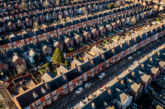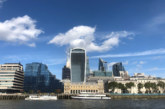Paul Hanratty, National Sales Manager at Hambleside Danelaw, talks to LABM about maximising the asset value and performance of local authority commercial properties.
The National Audit Office report ‘Local authority investment in commercial property’, released in February 2020, revealed that from 2016-17 to 2018-19, councils in England spent £6.6bn on commercial property; and that since 2010-11, the amount spent on commercial properties by councils has increased from £53m to £2.2bn in 2018-19. Of the £6.6bn, £957m of that was spent on industrial property.
These figures give some indication of the size of local authorities’ commercial property portfolios, which have largely been developed in an attempt to generate much-needed income in an era of austerity when it comes to central funding. There is now concern over whether, especially during and post-COVID-19, these properties could become a liability.
What is certain, though, is how critical it is that income from each asset is maximised. With this in mind, it’s time for local authorities to look up. One area where many commercial buildings’ value or income could be being compromised is the roof. More specifically, the rooflights. Paul Hanratty, National Sales Manager for Hambleside Danelaw, says: “Local authorities might be taking the rooflights element of their commercial and industrial buildings for granted — but the right adjustments could make a world of difference. If local authorities are experiencing some of their older commercial and industrial buildings as a drain on their finances, attending to the rooflights provides an opportunity for very significant savings and quick payback on investment through a combination of reduced costs and increased rental value. The added advantage is that the right rooflights solution will also contribute to their green agenda, which is only going to become more demanding as the years pass.”

More light, lower cost
Getting the level of light right in a building is critical to the working environment, health and wellbeing, productivity, safety and sustainability. High quality GRP rooflights should achieve the all-important Daylight Factor of between 4% and 8% at floor level. This level of illumination is well above the recommendations in BREEAM (2%) and the CIBSE guidelines (3%).
These improved lighting levels contribute to a building that has lower running costs, a lower carbon impact and is a safer and more pleasant environment to work in — which can help lower other business costs associated with covering sick days and healthcare. For local authorities, the benefits of high performance GRP rooflights can also help to optimise building asset and rentable values, building in a futureproofing element to cope with possible future changes in building use. The product’s long service life and its versatility only add to the confidence local authorities can have in their investment.
Sustainability
Sustainability is a driving force in most local authorities and this will only intensify as increasingly stringent targets are put in place by the Government on the road to Zero Carbon by 2050. While operational carbon has been the focus for some time, the importance of measuring and reducing embodied carbon is now being recognised as a critical factor.
GRP rooflight systems can make a significant contribution to the reduction of both operational and embodied carbon, while also offering enhanced performance compared to other rooflight systems. These systems are used in large new-build or refurbishment warehouse/factory buildings, which usually need high levels of diffused internal lighting.
Bringing free, ‘renewable’ natural light into a building during the daylight hours significantly reduces the cost and environmental impact associated with artificial lighting — even when lower energy-consuming LED systems are used. This makes GRP rooflights the logical choice for a range of reasons: lower operational carbon, lower embodied carbon, a long useful life meaning a reduction in lifetime costs and whole-life carbon, durability and service life meaning lower levels of replacement.
One manufacturer — Hambleside Danelaw — brings a further advantage to using its rooflight systems: they are the first industrial rooflight manufacturer to secure Environmental Product Declarations (EPDs) in the UK, independently verified by the Building Research Establishment (BRE). This came as a result of intensive work that allowed them to reliably confirm the embodied carbon for each component used in rooflight configurations.
The company has also developed an Embodied Carbon Calculator, which allows for any configuration of components in the rooflight, according to the requirements of the project — meaning that whatever configuration is used, the embodied carbon will always be clear and measurable.

Refurbishment
There are a number of ways to refurbish existing roofs, from the major task of re-sheeting — the removal and replacement of the existing building envelope; to overcladding — installing a new cladding system over the existing building envelope; to rooflight replacement — the most cost-efficient solution depending on individual project circumstances and demands.
Local authorities’ architects and contractors might like to engage experts from roofing/rooflight companies to look at any buildings where they think roof refurbishment might increase the building’s value and utility. With a focus on enhancing the asset value and return, lowering carbon impact and improving tenants’ working environment, those experts can demonstrate the difference that rooflights can make and how quickly payback on your investment will occur.
Header image shows a rooflight refurbishment, with existing rooflights on the left, new Zenon GRP rooflights on the right.









